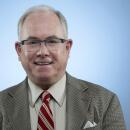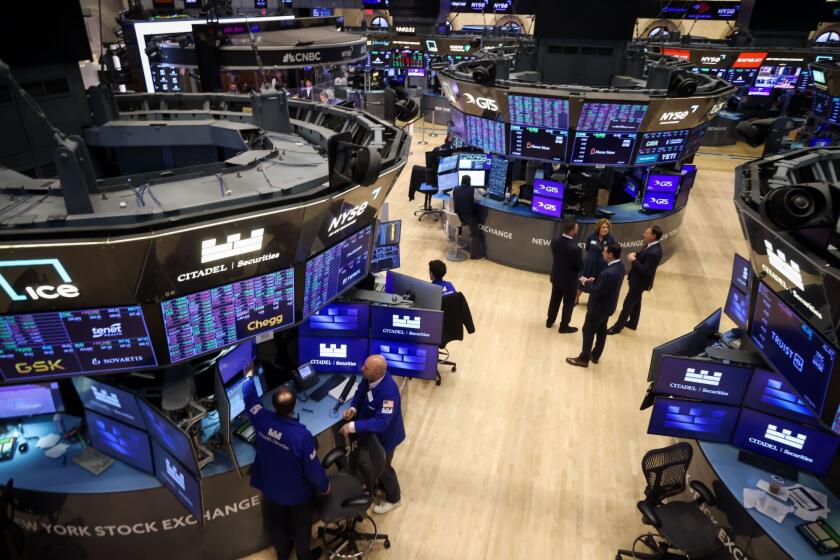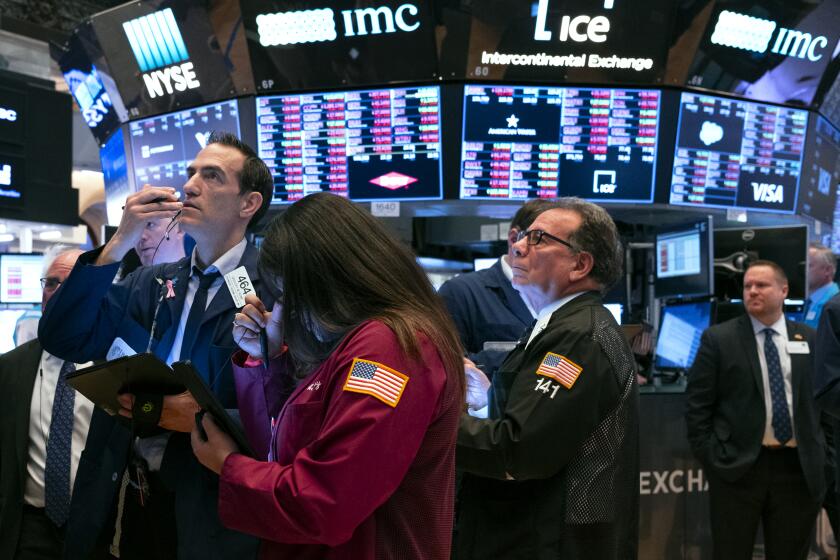Disney Discovering It’s a Small World After All
- Share via
To limit its risk, Walt Disney Co. took no ownership position when the first foreign Disneyland opened in 1983 in Tokyo. But by doing so, the company wound up limiting its return on what turned out to be the world’s most popular theme park.
To avoid repeating that mistake, Disney took a large stake in Disneyland Paris, but overbuilt and overloaded on debt, losing a fortune and seeing its ownership fall from 49% to 39% by the time the damage was contained.
Mindful of those costly missteps, Disney will try a third model at its planned theme park in Hong Kong, starting small but with a solid share of the profit and room to grow.
Hong Kong is bearing most of the cost, seeing the park as the anchor for a tourist district on Lantau Island that will broaden the region’s economy. And foreign demand seems high: Tokyo Disneyland’s annual attendance is running in the 17-million range and even at Disneyland Paris, which opened in 1992 amid recession and cultural protests, attendance and hotel occupancy are now in the originally predicted range.
When Hong Kong Disneyland opens in 2005, it will aim at first for 5 million visitors a year, compared with the initial 11-million target in France. The Hong Kong complex will include two or three hotels; Disneyland Paris has six.
And the 17 to 20 major attractions will be proven ones borrowed from other Disney parks--not expensive, cutting-edge new ones such as the “Spiderman” ride that Universal Studios developed for its new Islands of Adventure park in Florida.
The plan in Hong Kong is to gradually expand the park to handle 10 million visitors a year, then add a second theme park and more hotels. An entertainment and shopping zone at the complex also will have room to grow.
“Instead of building everything for Easter Sunday, we’re starting small,” says Walt Disney Attractions Chairman Judson Green, who led the company’s negotiating team. “It’s almost harkening back to the beginning of Disneyland. When Walt started, opening-year attendance was only a few million. Yet he had a castle, the lands--and lot of flexibility to grow.”
Disney will own 43% of Hong Kong Disneyland for a relatively small cash investment of $315 million. The Hong Kong government will provide $2.89 billion in cash, below-market loans and land-reclamation costs at the Lantau Island site. And the joint venture will borrow just $1.50 for every dollar of cash put in, unlike Paris, where the ratio reached 4 to 1 as costs soared.
In addition, Disney gets the same rich stream of royalties in China that it has always enjoyed from the Tokyo park. (It was supposed to have collected them in France as well, but was forced to give them up for five years in a 1994 restructuring.)
To compensate for Hong Kong’s underwriting the park, the deal includes an exit strategy for the government--and terms to discourage Disney from ever completely leaving. The government can sell its entire 57% stake over time, and there are numerous likely buyers, Green says. If Hong Kong Disneyland exceeds base financial projections, the government could increase its stake to 73% over 25 years.
Disney, by contrast, could sell only about a fifth of its stake, assuring its long-term ties to the venture.
But there are no indications at this point that the Burbank entertainment conglomerate would ever want to quit the Hong Kong project.
In fact, the park is part of a foreign expansion that is crucial to Disney’s long-term prospects. The company, which has one of the best-known brands and one of the most widely held stocks in the world, has stumbled of late in many divisions, although its animated films and theme parks remain solid.
Disney shares were trading at $28 on Friday, up from recent lows but still 32% off their peak in May 1998.
As it strives to modernize Disney Stores, revamp its consumer products operation, squeeze profit out of its live-action film division and keep video sales and TV ratings up in a saturated U.S. market, Disney has assigned ABC Group Chairman Robert Iger to coordinate its many businesses abroad.
Beyond any profit it generates, the new Hong Kong theme park is clearly expected to open doors for all of Disney’s divisions in the world’s most populous country.
“Disney has the opportunity to grow its international markets by a much greater percentage than domestically in the next millennium,” says Seidler Cos.’ Jeffrey B. Logsdon, among the first of many analysts to downgrade Disney stock last year. “It’s of utmost importance to them.”
Logsdon, who now rates Disney a “buy,” thinks that once Hong Kong Disneyland is up and running, the company could make a 50% return, more than $150 million a year, on its cash investment in the park.
Beyond that, though, the deal positions Disney for bigger movie, video and merchandise revenue as China becomes more affluent. “The park becomes a big advertisement, if you will, for everything else,” Green says.
The opportunity in China is unique, Logsdon says. For Disney, which had incurred official Chinese wrath when it released “Kundun,” a film about the Dalai Lama, the park will provide an “early mover advantage,” he says. “There are enormous barriers to entry to China, so this gives them an enormous advantage over other competitors.”
Adding parks has been on Disney’s agenda at least since 1961, six years after Disneyland opened in Anaheim, says consultant Harrison “Buzz” Price, who studied expansions repeatedly for Walt Disney. Early discussions about a park in Japan had been held with proponents there even before the company’s second U.S. park, Walt Disney World, opened in Florida in 1971.
After years of such talks, Tokyo Disneyland was created in a 1979 contract yielding Disney 10% of total ticket sales and 5% of food and merchandise revenue. Those royalties have grown from $40 million in 1983, when the park opened, to about $125 million last fiscal year, according to Paul G.S. Smith, an analyst with HSBC Securities in Tokyo.
But what appears in retrospect to have been foolish penny-pinching, Disney took no ownership stake in the park, which is controlled instead by Oriental Land Co., a firm dominated by Japan’s Mitsui Fudosan and Keisei Electric Railway.
Struggling with the high costs of opening its second Florida park, Epcot Center, Disney even ruled out paying $20 million for the sole right to sell merchandise at Tokyo Disneyland--a high-profit business whose sales totaled about $350 million last year.
So when Disney Chief Executive Michael Eisner and then-President Frank Wells came to the company in 1984, an early order of business was identifying a site for a European park--and avoiding the mistakes of Tokyo, Eisner says in his autobiography, “Work in Progress.”
“The failure to take an ownership position in Tokyo Disneyland was exceptionally costly,” he says. “Frank and I were determined to be primary owners if we undertook a new theme park in Europe.”
And Disneyland Paris, then called Euro Disney, which opened in 1992, was a deal that looked far sweeter than Japan: The company would receive the same royalties as in Tokyo plus own 49% of the venture while putting up just $160 million in cash.
A stock sale raised an additional $1 billion from public investors in return for 51% ownership. But the chief source of funds was a whopping $3.4 billion in debt--a burden that quickly became unbearable when the park opened and its many problems became apparent.
The miscalculations included how many people would stay in the hotels, the venture’s ability to develop the surrounding area at a profit, how much visitors would spend on souvenirs, even what kind of breakfasts Europeans would want.
Cost overruns were huge; Eisner and Disney design guru Tony Baxter pushed for perfection, believing that Europeans would demand detail rivaling the cathedrals and castles they were accustomed to. In one example, more than a dozen wood-burning fireplaces were added at the last minute after Eisner enjoyed warming himself by the fire in a Paris hotel lobby.
In late 1994, Disneyland Paris was saved from going under in a massive financial overhaul: Disney agreed to forgo royalty payments; lenders temporarily suspended interest payments on the debt; and Saudi Arabia’s Prince Al Waleed ibn Talal ibn Abdulaziz al Saud invested $500 million. The prince is now the park’s second-largest shareholder at 25%.
Park attendance slumped to 8.8 million that year, then began to rebound in 1995 after cuts in the price of tickets, hotel rooms, food and merchandise. Attendance is now up to a profitable 12.5 million a year and royalty payments to Disney have resumed, although at about half the level of five years ago.
Even the cultural protests--for years it seemed that every disgruntled group in France tied its anger to Disneyland Paris--have lessened.
“There was a political stigma attached to the park for a long time,” says analyst Logsdon. “But now it seems OK to go.”
While still looking to invest in new theme parks, Disney has proceeded cautiously since its French fling. Its second park in Anaheim, where construction is now underway, was downsized from the $3-billion Westcot to the $1.4-billion California Adventure.
Animal Kingdom, a new Florida park budgeted at $850 million, drew some complaints that it was a half-day experience, at least until an “Asia” land opened this past season.
And a “second gate” in Paris, a movie-themed park that originally was to have started construction in 1994, was confirmed recently on a budget of little more than $650 million.
Only in Tokyo are there plans for a major new Disney park with all-new attractions: Tokyo Disney Seas, scheduled to open in 2001. It is also the one location where Disney is not putting any of its own money at risk. The new park, like Tokyo Disneyland, will be owned by Oriental Land, with Disney collecting the same 10% royalty on tickets and 5% on food and merchandise that it reaps from the original Tokyo park.
Oriental Land will spend about $3.3 billion on the ocean-themed park, roughly twice the price of the Anaheim addition or the Hong Kong complex. “They are building a dream park, sparing absolutely no expense,” says Smith, the HSBC Securities analyst in Tokyo. Despite the high cost, he believes the park will be a hit.
In Hong Kong, of course, Disney also faces thorny political and economic concerns of an entirely different kind than in Paris or Tokyo, including the chance that the government in Beijing could one day change its hands-off stance toward the special region.
Tourism in Hong Kong has dipped in the two years since the British handed the colony back to China. But Hong Kong has spent $21 billion to develop a state-of-the-art airport complex near the Disney park, betting it can become the leading gateway to Pacific Asia.
It’s a bet Disney also is making, although officials will not rule out the possibility that another park could someday be built in Shanghai.
Officials at Disney also have expressed interest over the years in opening a park in Latin America, but Hong Kong clearly is regarded as a special opportunity.
“These milestones don’t come that often,” says Disney Attractions chief Green. “We have to be sure when going into a market that it has the potential to grow substantially in the future. And that’s what attracted us to Hong Kong.”
More to Read
Inside the business of entertainment
The Wide Shot brings you news, analysis and insights on everything from streaming wars to production — and what it all means for the future.
You may occasionally receive promotional content from the Los Angeles Times.











